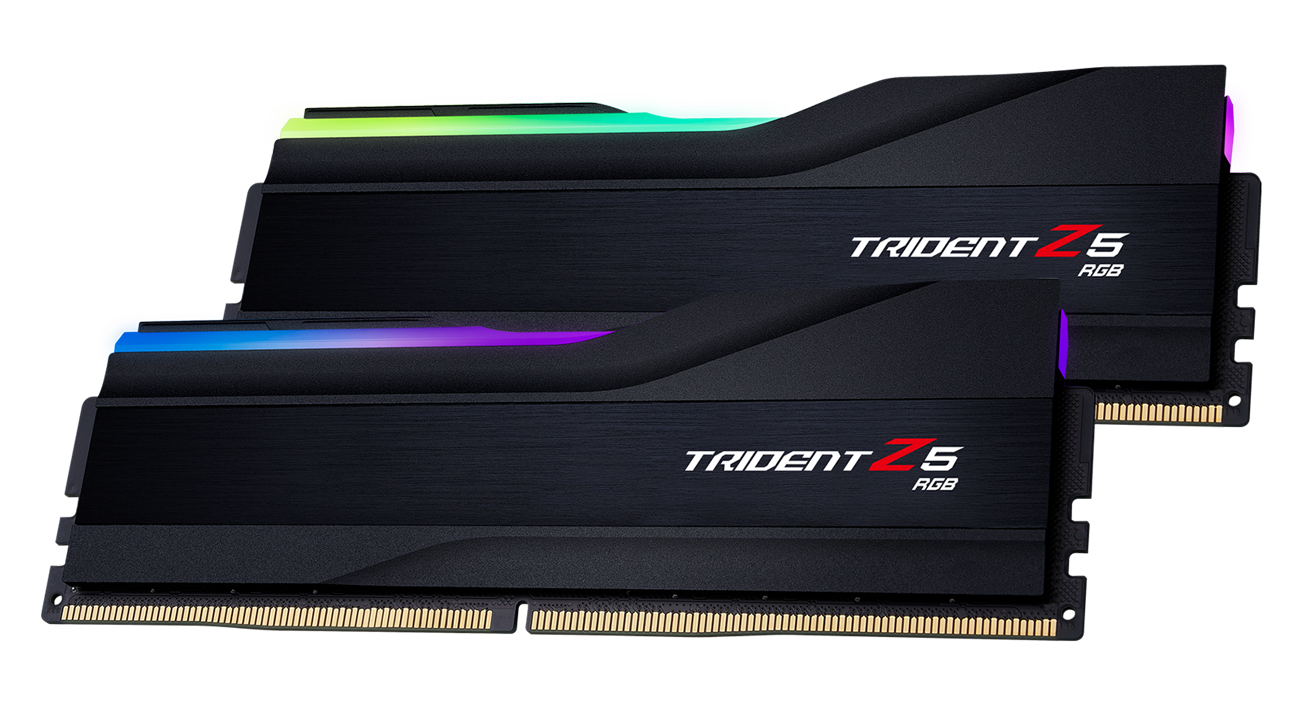Our Verdict
G.Skill keeps raising the DDR5 performance bar, but this kits is simply too expensive relative to a high performance DDR5-6000 or 6400MHz kit.
For
- A good set and forget XMP kit
- Excels in latency sensitive apps
- Lovely design
Against
- You're better off with a fast 6400MHz kit
- Negligible performance gains in many apps
PC Gamer's got your back
When the first DDR5 memory kits were released, many enthusiasts were concerned about two things above all others: latency and price. The best launch kits were around the DDR5-6400 C40 mark, with some Samsung based 6000MHz C36 kits. Now that many months have passed, the technology is maturing, and that means those early worries are diminishing.
The lowest latency DDR5 kit yet.
DDR5 latencies are seemingly dropping month by month. Back in November of 2021, a CAS latency of 40 was normal, even for lower speed kits. Fast forward six months and I see G.Skill has released a 6600MHz kit with a CL of just 34. That looks fantastic on paper, but running that kit at those speeds will be a struggle on some motherboards. G.Skill knows that and so it has released a more user-friendly kit. It runs at 5600MHz with timings of 28-34-34-89. That’s the lowest latency DDR5 kit yet.
The G.Skill Trident Z5 RGB DDR-5600 memory I have on hand for review is a 32GB (2x 16GB) kit that runs at 1.35V. Aesthetically it's identical to other Trident Z5 RGB kits, which are available in your choice of black or silver. I have reviewed two other Trident Z5 kits. They are the Trident Z5 RGB DDR5-6400 C32 kit and the Trident Z5 RGB DDR5-6000 C36 kit back at the time of the launch. Comparing this DDR5-5600 C28 kit will be an interesting exercise!
At the time of writing, the kit is priced at $379, and that's a problem. If you go back six months, that price would be a mega bargain. But these days you can get high quality 6000 and 6400MHz memory for less than that. It's more expensive than G.Skill's own 6400MHz C34 kit at $350 (at the time of writing) A look at Newegg shows that there are only a handful of kits priced at more than $379.
For some perspective though, the best kits were $600 or a lot more at around the start of the year, when they were essentially unavailable anyway. $379 might be a lot, but at least it's trending downwards. Lower DDR5 prices will be critical if AMD's DDR5 only Zen 4 platform is to sell in high numbers when it launches later in the year.
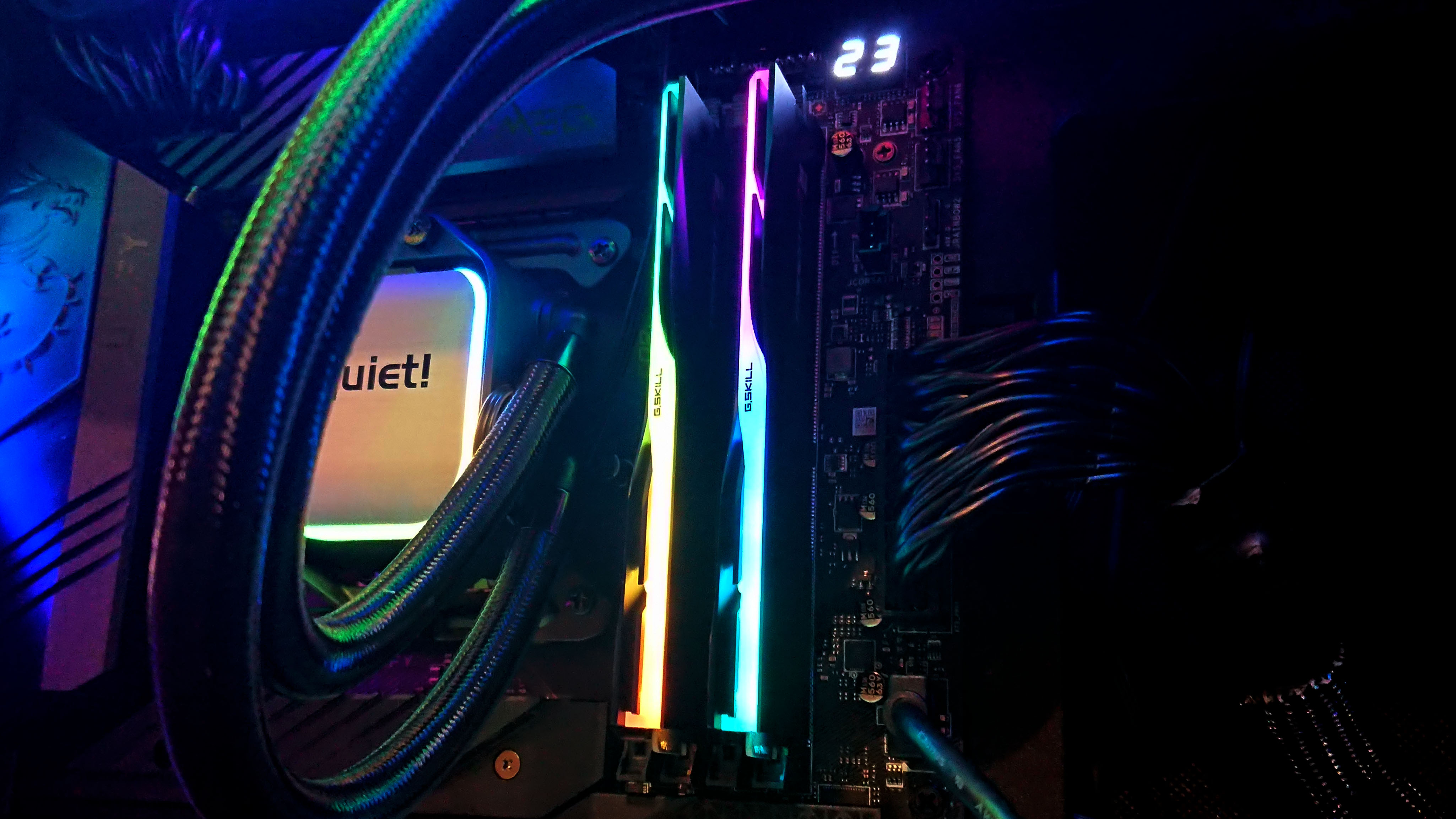
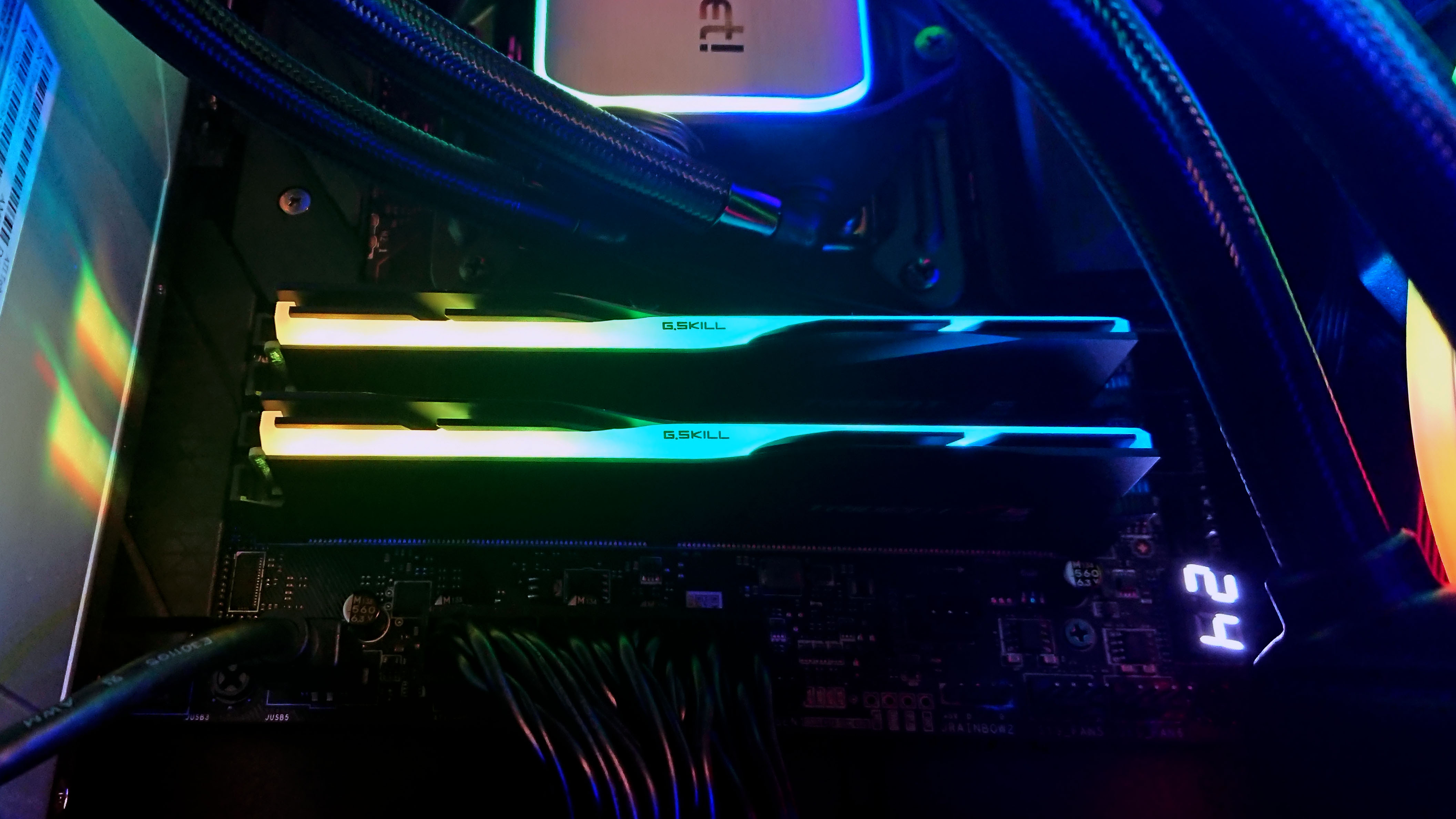
The RGB lighting can be controlled by G.Skill's simply named Lighting Control software. However, if you already have motherboard RGB control apps installed, it will work too. G.Skill say the kit can be controlled by the Asus, Gigabyte, MSI, and ASRock RGB control apps. I did the benchmark testing on an Asus Maximus Z690 Apex, and later popped it into a system with an MSI Z690 Unify. The MSI Mystic Light app had no problem detecting and synchronizing the lighting of the Trident Z5 kit with the rest of the system.
Model Name: G.Skill F5-5600J2834F16GX2-TZ5RK
Memory Type: Unbuffered DDR5
Capacity: 32GB (2x 16GB)
Rated Speed: 5600MHz
Rated Latency: 28-34-34-89
Tested Voltage: 1.35v
Warranty: Limited Lifetime
XMP: Intel XMP 3.0 Ready
Price: $379
The kit contains SK Hynix IC's. These chips are common in high performance DDR5 kits. They're widely supported and compatible with most motherboards, especially now that we are well into the DDR5 era and most of the early niggles have been ironed out.
It's always worth checking the QVL list of your motherboard to be sure of compatibility, though even if the kit is not listed, I'd be surprised if a DDR5-5600 kit with SK Hynix presented any issues. It'll be easier on your CPU's memory controller than a 6600MHz+ kit.
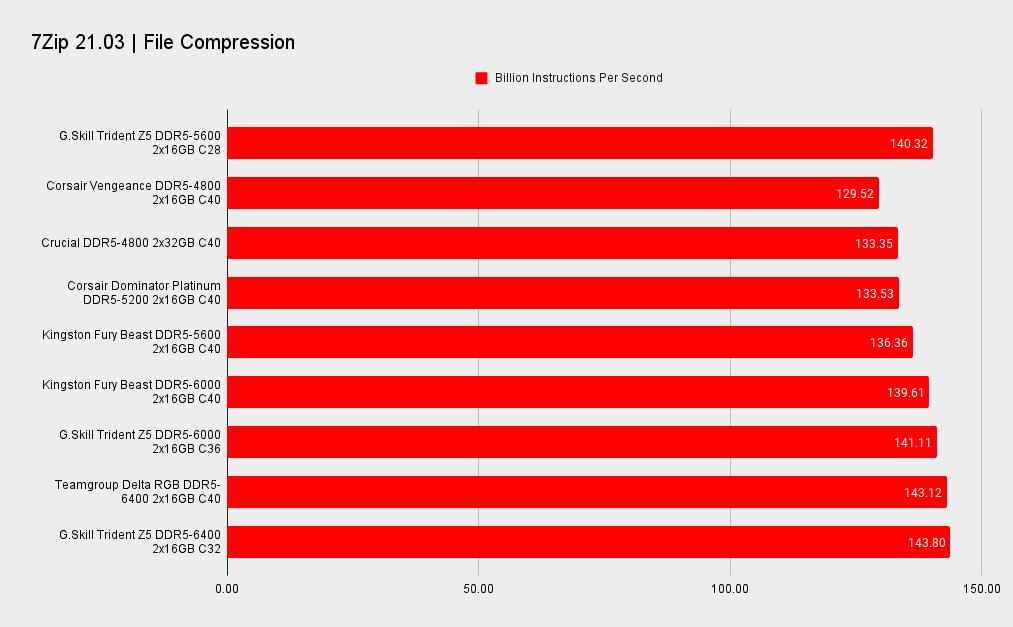
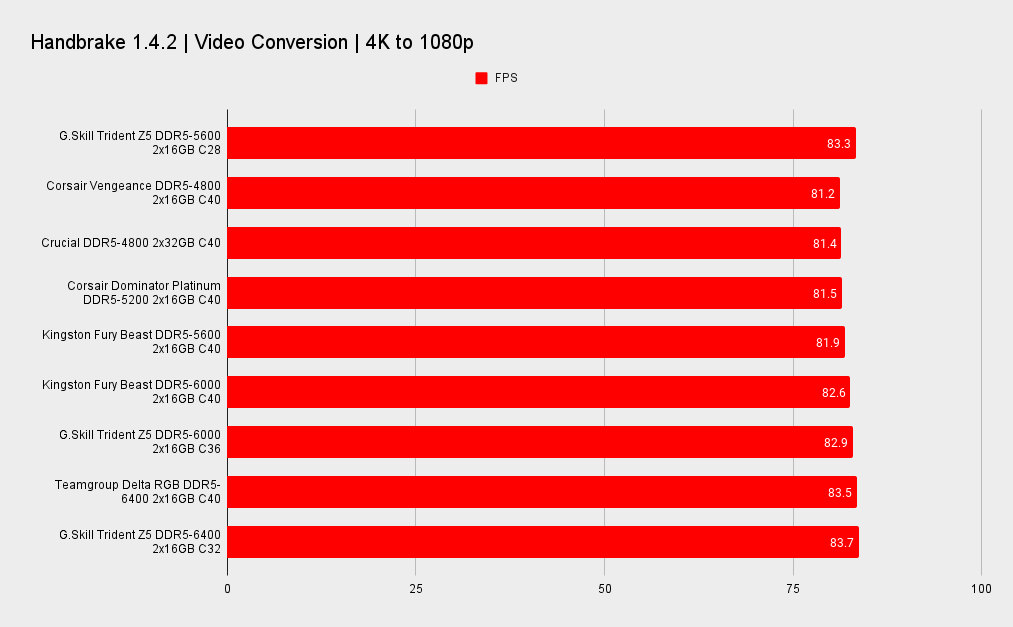
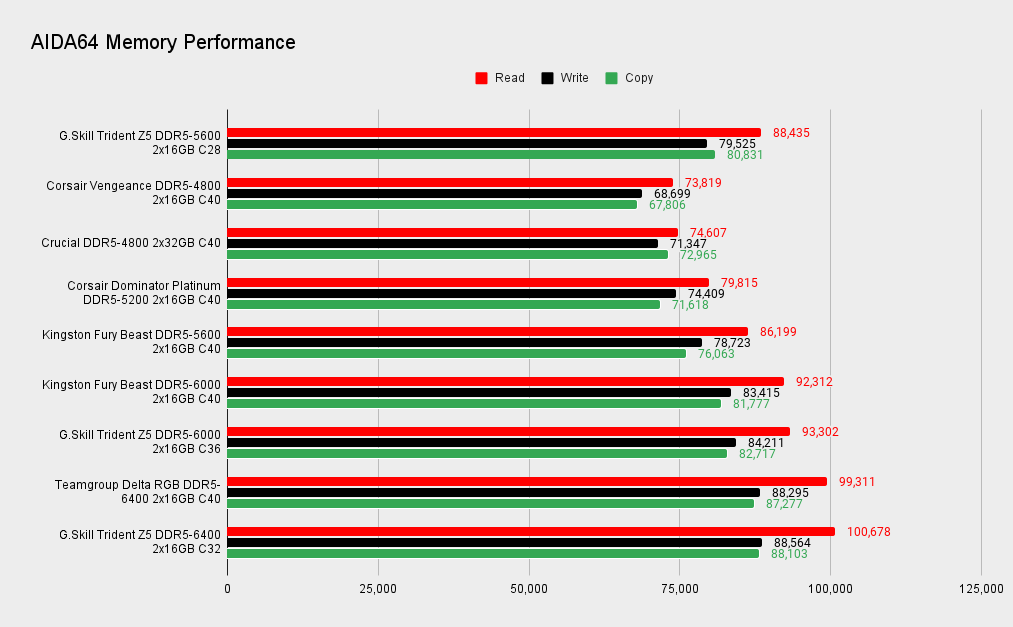
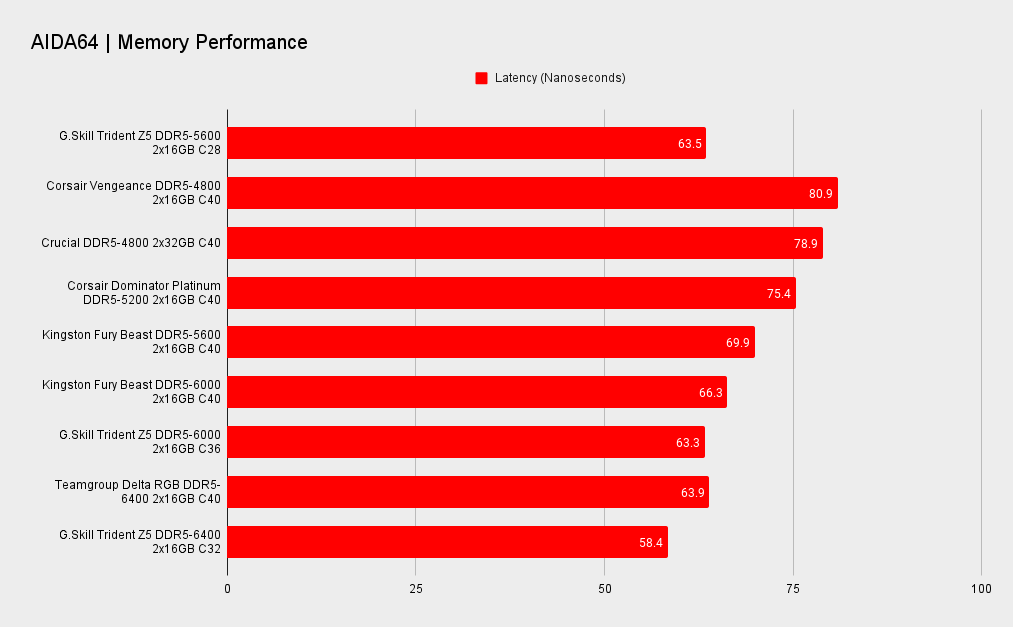
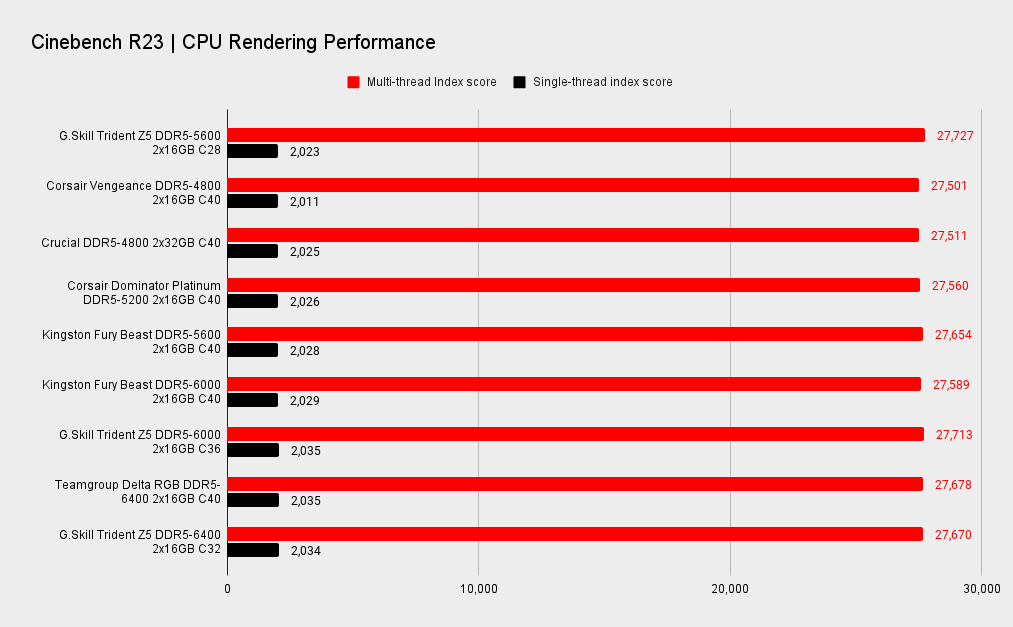
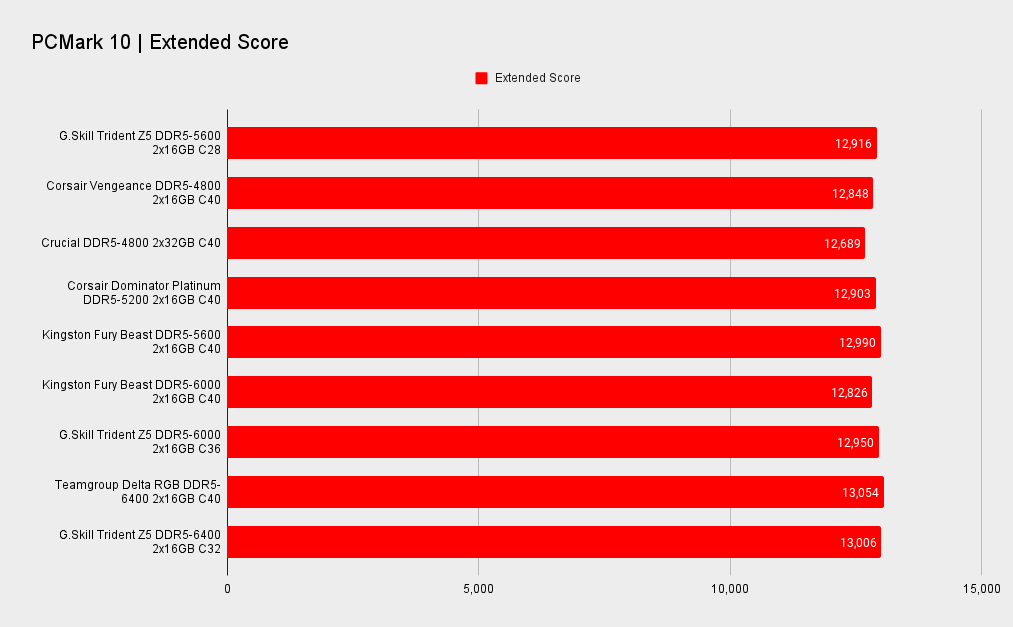
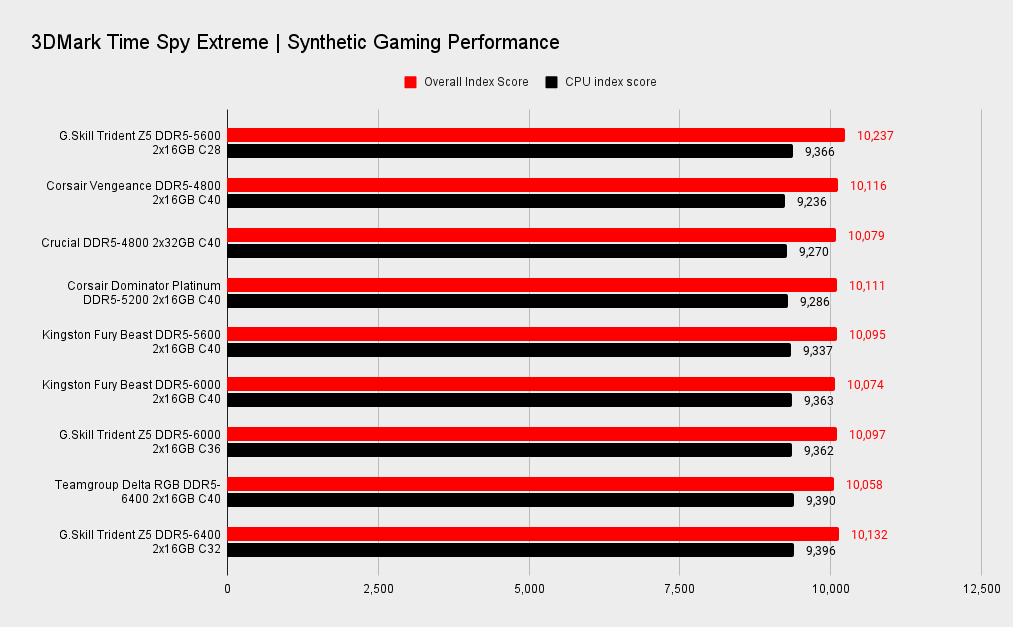
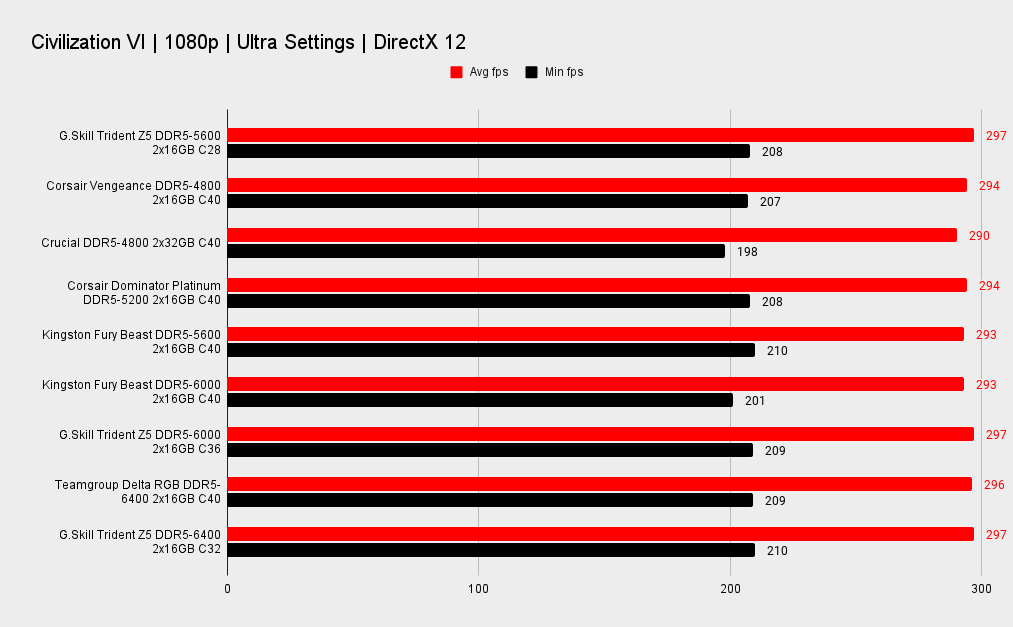
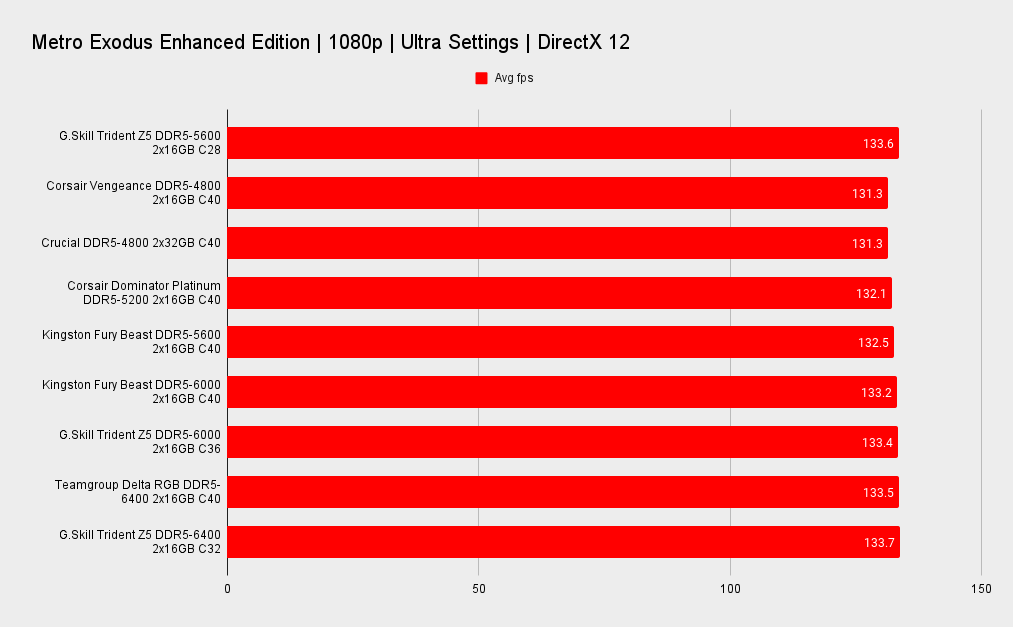
CPU: Intel Core i9 12900K
Motherboard: Asus ROG Maximus Z690 Apex (DDR5)
GPU: Zotac RTX 3080 Ti Amp Extreme Holo
SSD: Seagate FireCuda 530 2TB
PSU: Corsair AX1000
Chassis: Thermaltake Core P8
Cooler: Cooler Master PL360 Flux
OS: Windows 11 Build 22800.282
Now comes the key question. How does it perform? As always, it depends on the task. Sometimes it can be well worth it, while at other times even the best memory can be merely within a margin of error range of the most generic of kits.
File compression and video encoding are tests that can show impressive gains. The G.Skill 5600 C28 kit all but matches the fastest 6400MHz kits at video encoding and matches 6000MHz kits in file compression. It's also interesting to see how it compares to a 5600MHz kit at C40. That lower latency delivers a significant, though not genuinely huge advantage.
As pure memory tests, the synthetic AIDA64 results are impressive, but it's the latency result that impresses. Only the absolute top shelf 6400MHz C32 kit delivers a truly lower latency number.
Games can benefit from lower latency, though it varies from game to game. Civilization VI shows next to no gain from slower memory. Metro Exodus Enhanced also shows a little bit more of a boost, and that's actually surprising given this test is GPU limited. The best case for buying expensive and low latency memory is if you play fast paced FPS games at high frame rates. Anything that reduces overall system latency and lag is something hardcore FPS lovers will appreciate.
As is almost always the case when looking at the best memory, it's generally overkill and only makes sense if you've got an equally high end system to match. You're not going to pair 4800MHz memory with an Intel Core i9 12900K and GeForce RTX 3080 Ti system. On the flipside, you won't buy this kit to use with a 12100F and GTX 1650 system. It's important to use it with a balanced system.
For most of us, honestly, a good quality and well priced 5200MHz or 6000MHz kit range will deliver perfectly acceptable performance in real world scenarios. Think of this G.Skill kit as something that doesn't add performance so to speak. Think of it as something that minimizes bottlenecks, allowing your high-end hardware to shine at its brightest.
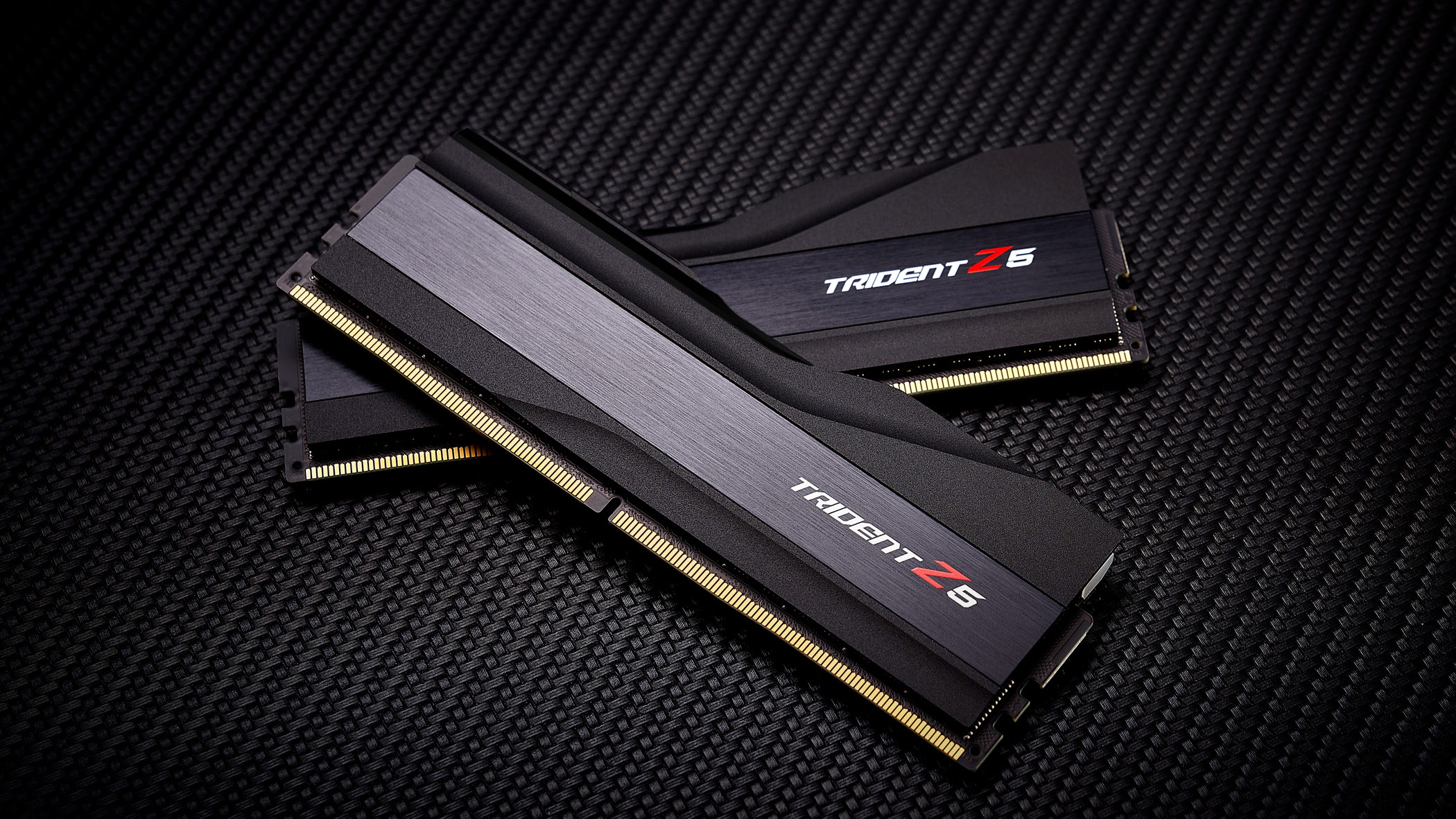
DDR5 memory has come a long way from it's sometimes flaky beginnings. Early on, some boards really struggled with 6000MHz+ memory. That seems to have been fixed for the most part, and SK Hynix based memory is now widely supported.
The real strength of a kit like this may not come to the fore until next generation platforms are released. Will a 13th Gen or Zen 4 system allow easy 7000MHz+ clocks? Time will tell.
My CPU doesn't have any troubles up until about DDR5-6667, but pushing beyond that requires very steep IMC voltage increases, indicating my CPU is at its limit. DDR5-6667 is still mighty and I look forward to revisiting DDR5 overclocking on a next gen platform. Those DDR5-10000 results might be doable on air cooling, rather than LN2. Maybe.
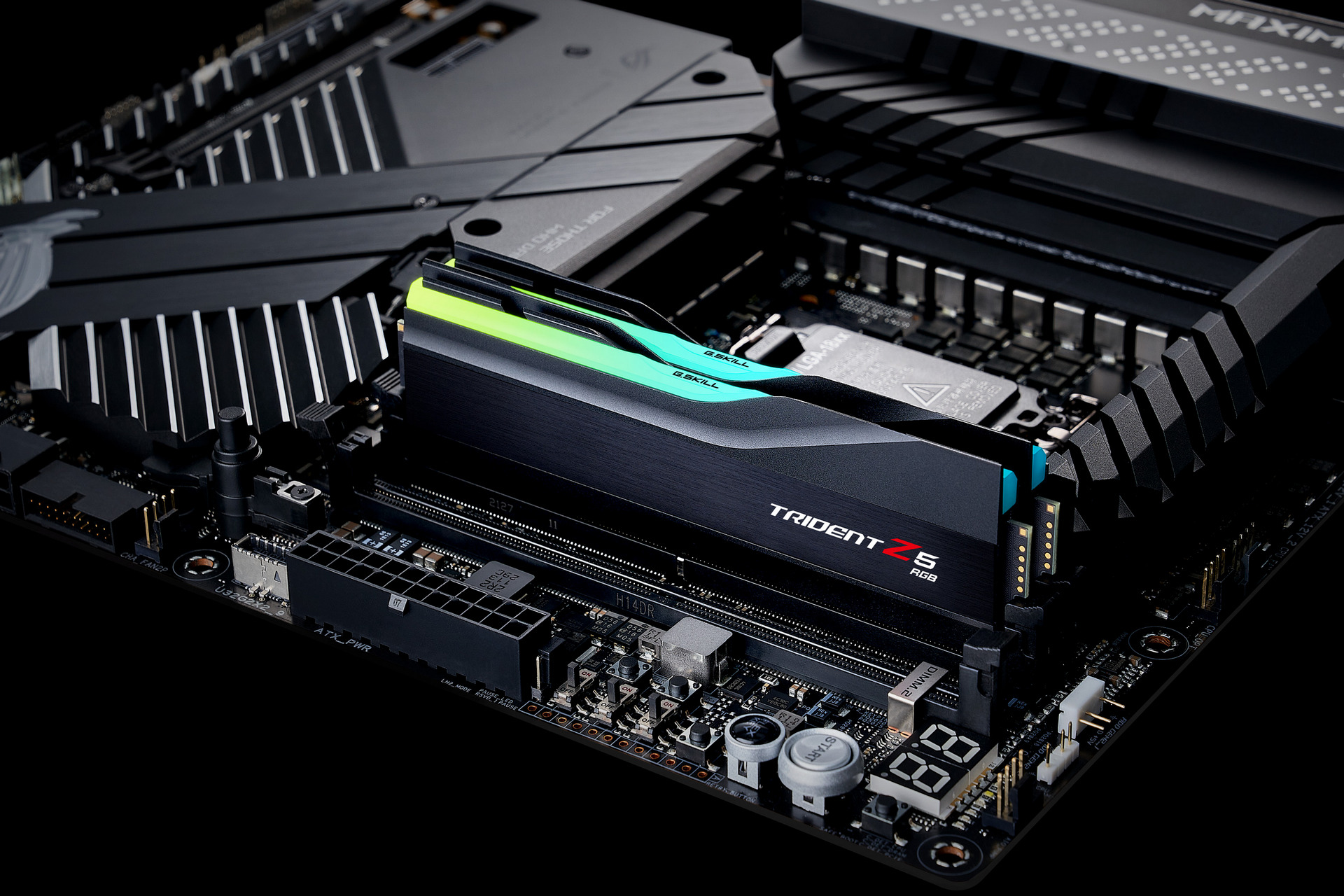
Is it a must buy? Like all fast memory, the answer is no.
G.Skill is in my opinion the best memory vendor. It's always releasing faster and faster memory that rarely disappoints. This Trident Z5 DDR5-5600 CL28 kit is genuinely unique. I'm not aware of anything similar.
It's a fantastic and easy to use kit and that is its greatest strength. You could theoretically pop it into a B660 motherboard, set the XMP and let it run for the next few years before adding a future GPU. You'd get your money's worth if you do something like that.
But is it a must buy? Like all fast memory, the answer is no. It's the kind of kit that only makes sense if you have a top end system to match, and even then, you're probably better off buying a very good 6400MHz kit that's hardly any more expensive than this one. It's a good fun kit with plenty of OC headroom, or you have a specific use case, for example if you plan to sink a few hundred hours into a game that really takes advantage of the low latency on offer.
The G.Skill DDR5-5600 C28 kit is very good at what it does, but it seems to be a low volume release. I can't find it listed outside the USA at all. At $379 it's just too expensive relative to some of G.Skill's own top spec kits. G.Skill's own DDR5-6000 C30 memory can be found for cheaper, while a well balanced speed/latency 6000 C36 Samsung based kit is under $300 at the time of writing.
I love the kit, it's great fun, and its highly tweakable, but it's tough to recommend when G.Skill's own equally highly regarded kits can be bought for 10 or 20% less money. I'd recommend grabbing one of those ahead of this Trident Z5 RGB 5600 C28 kit.
G.Skill keeps raising the DDR5 performance bar, but this kits is simply too expensive relative to a high performance DDR5-6000 or 6400MHz kit.

Chris' gaming experiences go back to the mid-nineties when he conned his parents into buying an 'educational PC' that was conveniently overpowered to play Doom and Tie Fighter. He developed a love of extreme overclocking that destroyed his savings despite the cheaper hardware on offer via his job at a PC store. To afford more LN2 he began moonlighting as a reviewer for VR-Zone before jumping the fence to work for MSI Australia. Since then, he's gone back to journalism, enthusiastically reviewing the latest and greatest components for PC & Tech Authority, PC Powerplay and currently Australian Personal Computer magazine and PC Gamer. Chris still puts far too many hours into Borderlands 3, always striving to become a more efficient killer.
